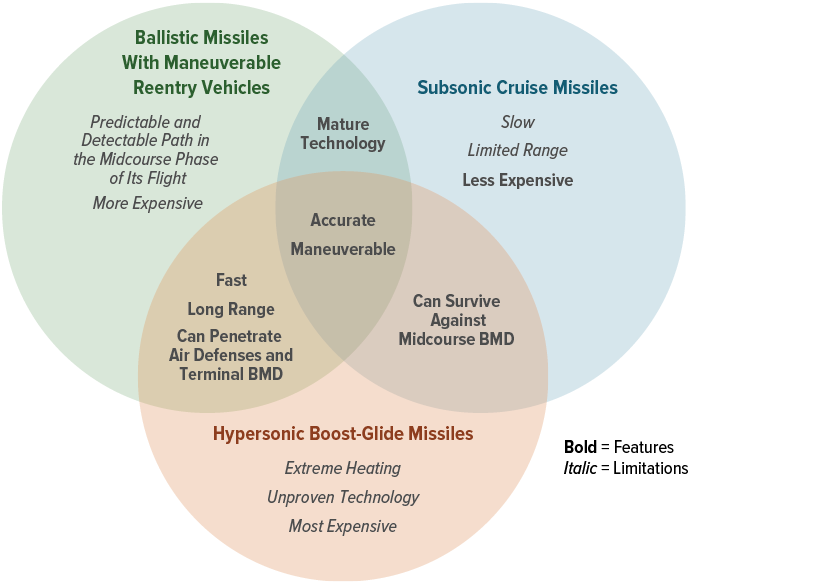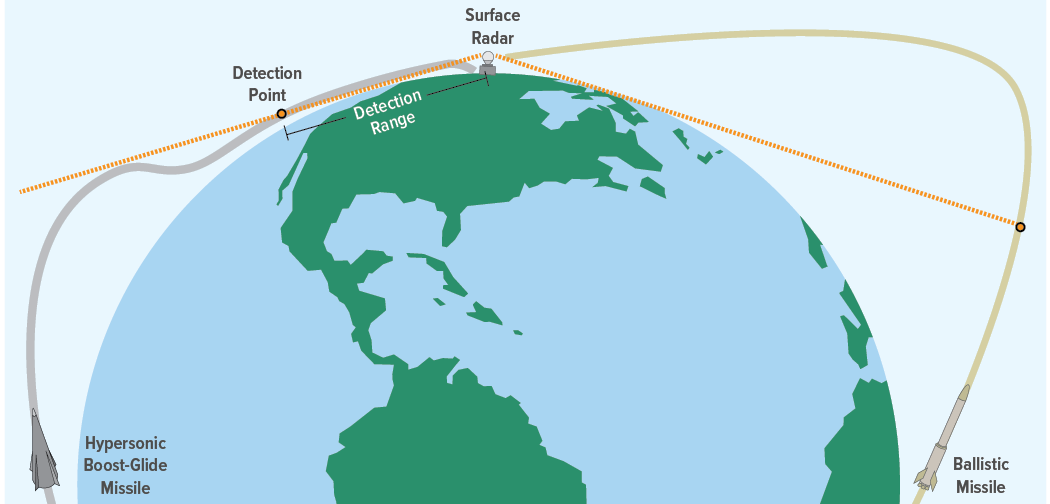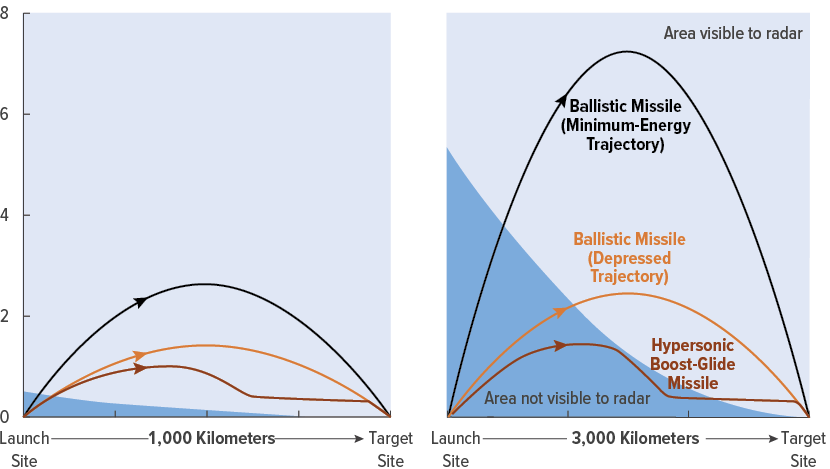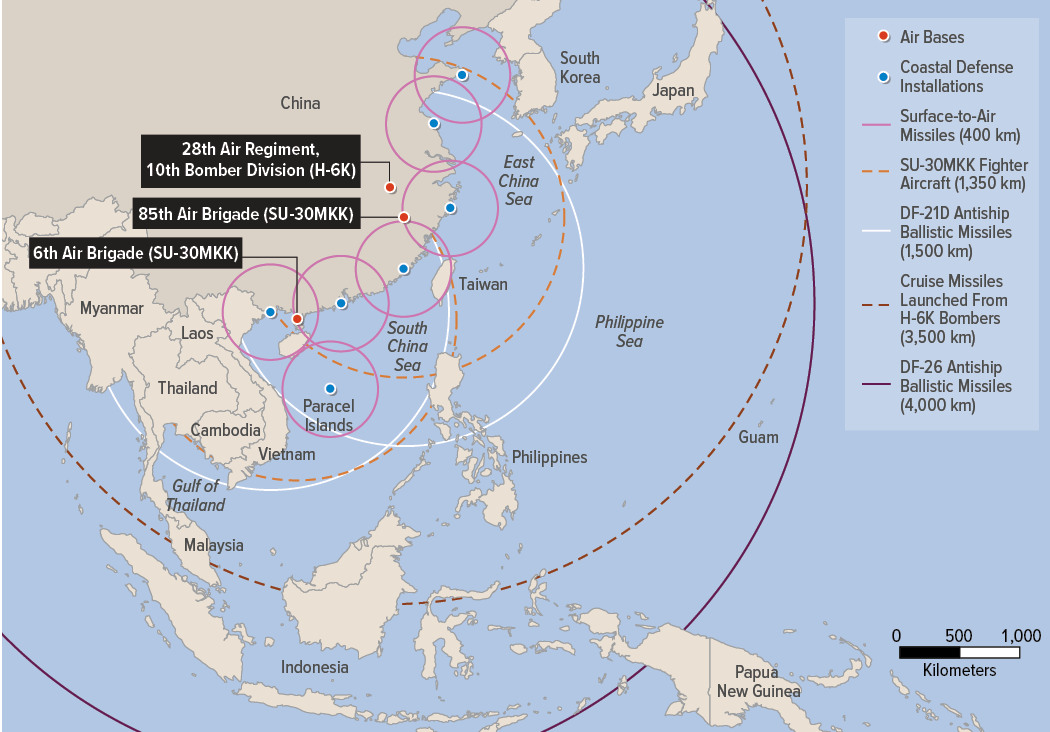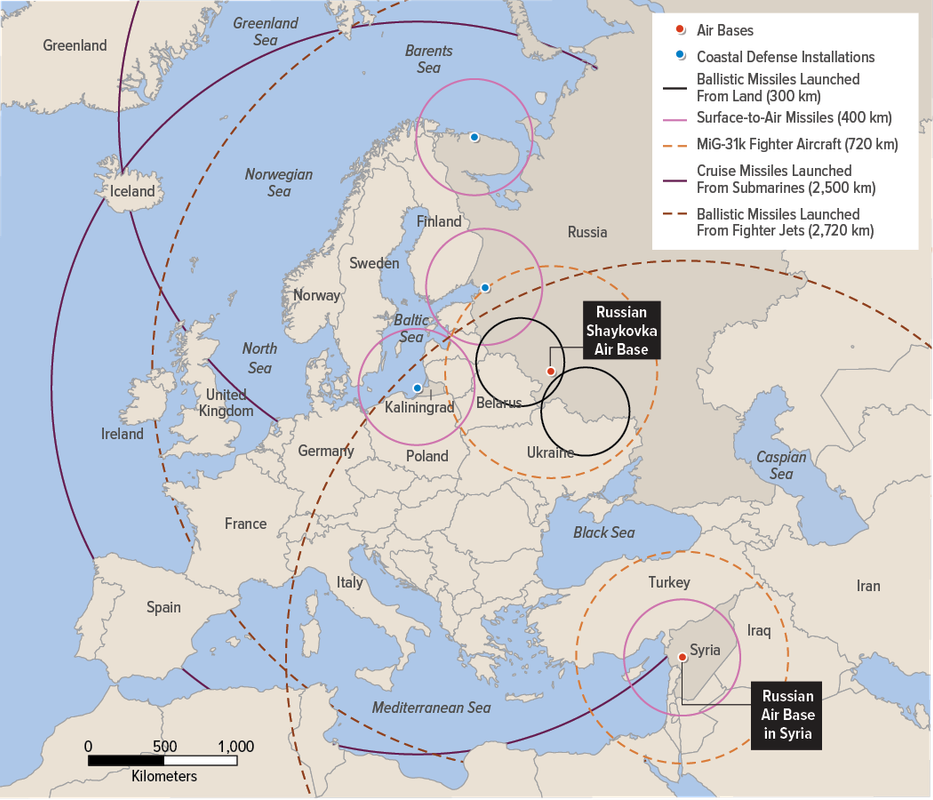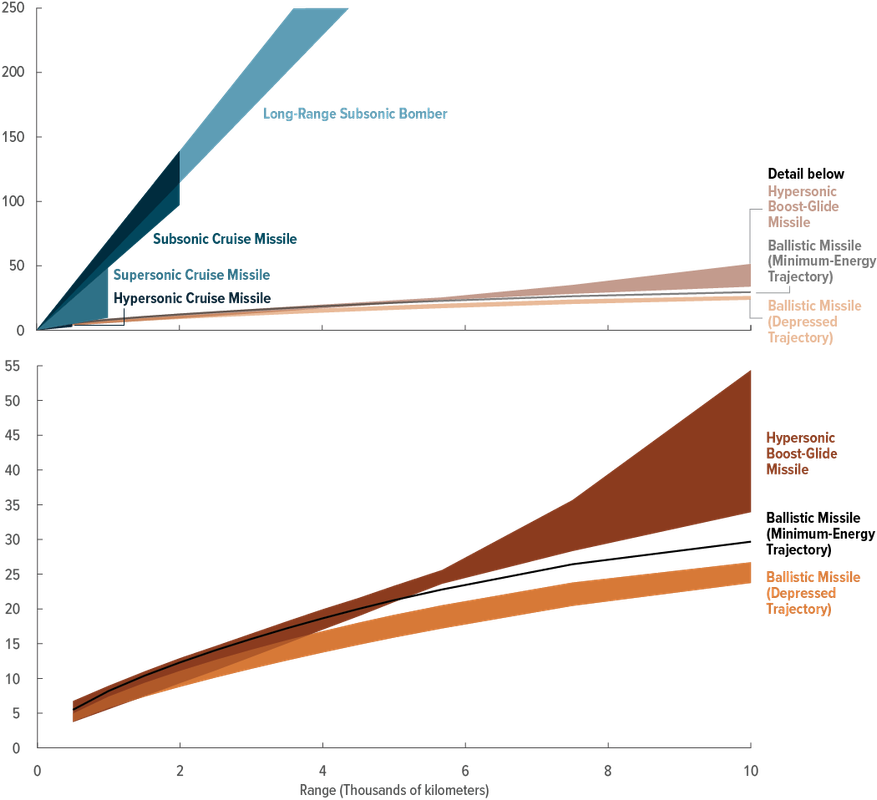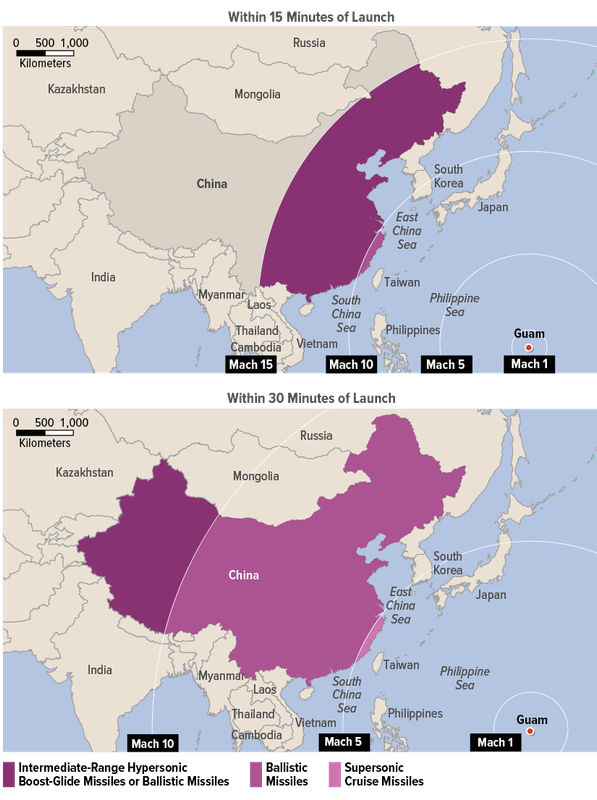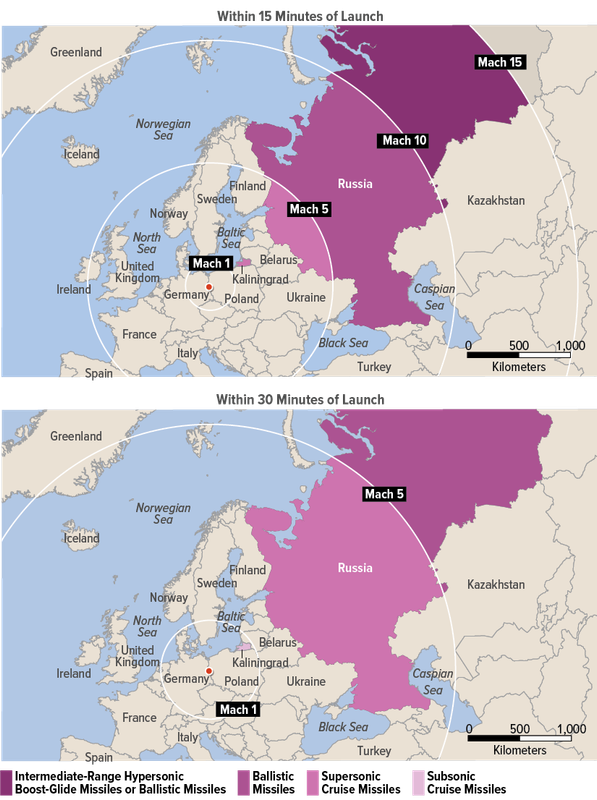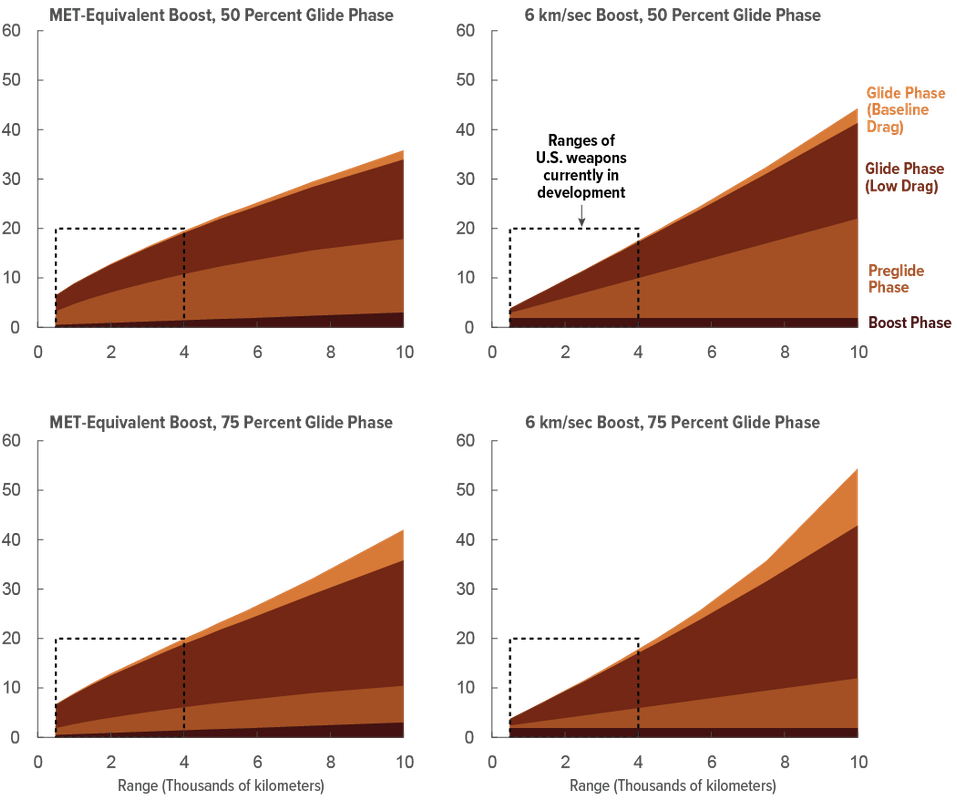俄对美德英波法乌等的战争之Bakhmut战,和其它,和然后,和中国,和宇宙
版主: Softfist
Re: 俄对美德英波法乌等的战争之Bakhmut战,和其它,和然后,和中国,和宇宙
重要情况中的3点meiyoumajia 写了: 2023年 4月 5日 12:14 接上贴
今年美国cbo的相关报告。如前所述所述:还没有讨论到中国试验成功的那种组合系统。但这个报告对现在有的和以后多年可能有的实用武器总结得已经非常详尽。
我把几个最重要的附图传过来。比较有悟性而且有某些理工基础的人看了这些图后就会知道大多数最重要的情况了。
https://www.cbo.gov/publication/58924
U.S. Hypersonic Weapons and Alternatives
Summary
After many decades of conducting basic research, the Department of Defense (DoD) recently increased its spending to develop technology for hypersonic weapons. The Air Force, Army, and Navy all plan to field hypersonic missiles within the next few years. China and Russia have stated that they are also fielding such weapons.
The term “hypersonic weapon” is often misapplied. Strictly speaking, it refers to a missile that travels at speeds at least five times the speed of sound in air (Mach 5 or above) and that spends most of its flight inside the Earth’s atmosphere (rather than in space), where it can use aerodynamic design features to maneuver.
The combination of long range, high speed, and maneuverability distinguishes the hypersonic weapons that DoD is developing from the conventional strike weapons in the U.S. military’s current inventory. Hypersonic missiles are considered a possible counter to the antiaccess and area-denial (A2/AD) systems that potential near-peer adversaries such as China and Russia are deploying to prevent U.S. forces from operating freely in their regions. In theory, hypersonic weapons could be launched from outside the range of those systems and could reach targets within minutes over medium to intermediate ranges (from hundreds to a few thousands of kilometers), with a high degree of accuracy and less vulnerability to defenses than existing missiles.1
The Congressional Budget Office analyzed the relative capabilities and possible costs of hypersonic missiles and potential alternatives in scenarios in which long-range, rapid-response weapons might be useful. CBO found that hypersonic missiles with sufficient ranges for A2/AD scenarios—at least 1,000 kilometers (km), or about 600 miles, for missiles launched from aircraft and at least 3,000 km, or about 1,900 miles, for missiles launched from the ground or sea—have the speed to be useful in the early stages of a conflict with a near-peer adversary.
Hypersonic missiles with those ranges, however, would be more expensive than similar ballistic missiles and pose much greater technical challenges (see Figure S-1). CBO estimates that hypersonic missiles would cost roughly one-third more than ballistic missiles with maneuverable warheads that had the same range and accuracy and traveled at similar speeds. (The United States does not currently field such ballistic missiles, but the technology for them is well developed.)
Figure S-1.
Comparison of the Features and Limitations of Hypersonic Missiles and Alternatives
The hypersonic missiles being developed by the U.S. military combine desirable traits of two types of U.S. missiles with well-developed technology: ballistic missiles’ speed and long ranges, and subsonic cruise missiles’ maneuverability and ability to survive against midcourse missile defenses. Hypersonic missiles introduce new technical challenges, however.
Notes
Hypersonic weapons could be better than ballistic missiles at penetrating long-range missile defenses that operate outside the atmosphere. So far, however, no potential U.S. adversaries have succeeded in developing such defenses. Against shorter-range defenses, it is unclear whether hypersonic missiles would have an advantage over ballistic missiles with maneuverable warheads.
Given their cost, hypersonic weapons would provide a niche capability, mainly useful to address threats that were both well-defended and extremely time-sensitive (requiring a strike in 15 minutes to 30 minutes). If time was not a concern, much cheaper cruise missiles could be used. If targets were time-sensitive but were not protected by defenses that effectively intercept incoming ballistic missiles in the middle of their flight, less costly ballistic missiles with maneuverable warheads could be used.
How Did CBO Compare Planned Hypersonic Weapons and Possible Alternatives?
To evaluate hypersonic missiles and potential alternatives, CBO considered possible scenarios for their use and what those scenarios would require in terms of missiles’ range, time to reach their targets (responsiveness), and ability to reach those targets without being intercepted (survivability). Both China and Russia have long-range A2/AD systems that are tailored to prevent the United States from achieving air, land, and sea superiority in their areas during a conflict. A long-distance, highly responsive weapon could be useful in other circumstances, such as when fleeting intelligence was available about the location of a high-value target (a missile launcher or the head of a terrorist organization, for example). CBO concluded that in A2/AD scenarios centered on the South China Sea and the Baltic region, there would probably be a number of time-sensitive, high-value targets for which rapid strikes from longer distances could be useful. In evaluating those scenarios, CBO also considered whether potential adversaries had missile defense systems to defend against an incoming U.S. missile.
CBO identified potential weapons that could be employed in such scenarios and estimated their performance using metrics describing range, responsiveness, and survivability. The weapon systems that CBO considered include existing systems, such as subsonic cruise missiles like the Navy’s Tomahawk Land Attack System, and possible future systems, such as hypersonic cruise missiles and hypersonic boost-glide missiles like those being developed by DoD. (A cruise missile is powered by an engine throughout its flight; a boost-glide missile is initially accelerated to a high altitude using a rocket and then glides at high speed through the atmosphere to its target.) CBO also considered hypothetical ballistic missiles with maneuverable warheads that would provide accuracies similar to those predicted for hypersonic boost-glide missiles.
CBO then narrowed its list of weapon systems to only those technologies that could meet the more demanding requirements for range, responsiveness, and survivability in the relevant scenarios. CBO analyzed the characteristics of each of those systems and estimated the cost to produce them.
What Did CBO Find?
To operate effectively in an adversary’s A2/AD zone, the U.S. military might need to strike a small number of targets in as little as an hour at ranges that could be as long as 3,000 km to 5,000 km (about 1,900 miles to 3,400 miles), CBO estimates. Such targets include coastal air-defense systems, long-range strike systems, and over-the-horizon radars that are essential to maintaining an A2/AD zone. By degrading an adversary’s long-range strike systems and defenses, the United States could limit the effects of A2/AD systems early in a conflict, allowing it to use a broader arsenal of shorter-range and less survivable weapons thereafter.
Of the potential alternatives that CBO examined for those types of missions, only ballistic missiles equipped with maneuverable reentry vehicles (MaRVs) and hypersonic boost-glide missiles would have the combination of speed and range to strike targets under the strict time constraints associated with the most challenging A2/AD scenarios.
Comparison of Hypersonic Boost-Glide Missiles and Ballistic Missiles
CBO concluded that hypersonic missiles combine many features that would present challenges to defense systems designed to intercept ballistic missiles. (Indeed, a main reason that China and Russia have been developing hypersonic weapons is a desire to defeat the United States’ comparatively advanced ballistic missile defense capabilities—both short-range terminal defenses that protect forces in a theater of operations and long-range midcourse defenses that protect the United States itself.) By spending much of their flight inside the atmosphere, hypersonic boost-glide missiles would have an advantage over ballistic missiles in surviving midcourse ballistic missile defense systems, which aim to intercept ballistic missiles in the middle of flight, when those missiles are high above the atmosphere on a predictable and detectable path. That potential advantage for hypersonic boost-glide missiles might become important if a potential U.S. adversary developed midcourse ballistic missile defenses that operated outside the atmosphere and that were effective against countermeasures (such as decoys to fool interceptor missiles).
Against shorter-range missile defenses, it is unclear how much advantage hypersonic missiles would have over ballistic missiles equipped with maneuverable reentry vehicles. By flying low, hypersonic missiles could force the surface-based radar associated with short-range defenses to detect a missile later in its flight, shortening the time available for a defense system to intercept it. But because hypersonic missiles use up much of their energy while gliding toward their targets, they are likely to be traveling more slowly than a ballistic missile’s MaRV as it gets close to its target. In addition, both types of missiles can perform preprogrammed maneuvers near their targets to make it harder for short-range defenses to intercept them.
Hypersonic weapons also have the potential to create uncertainty about what their ultimate target is. Their low flight profile puts them below the horizon for long-range radar and makes them difficult to track, and their ability to maneuver while gliding makes their path unpredictable. Ballistic missiles equipped with MaRVs could also create target uncertainty by maneuvering during the late stages of flight. But because hypersonic missiles can maneuver during more of their flight, their target uncertainty is greater than for a MaRV. Such uncertainty could be an advantage by making it harder for adversaries to defend against attacks, but it could also cause the target country or nearby countries to misinterpret the United States’ intentions. The importance of that consideration would depend on the details of a particular scenario.
The United States does not currently field intermediate-range ballistic missiles, in part because some of those missiles were prohibited by the Intermediate-Range Nuclear Forces treaty, which the United States was a party to from 1988 to 2019. Over the years, however, the United States has mastered the technological challenges of operating such missiles. For example, in the 1980s, the U.S. military deployed Pershing II medium-range ballistic missiles with maneuverable warheads. Both the hypersonic missiles that DoD is currently developing and the ballistic missiles with MaRVs that CBO included in its analysis would probably be accurate enough to strike many fixed targets. However, both missiles would need improved targeting technology (such as a homing seeker or other type of sensor) to improve their accuracy or to enable them to strike moving targets.
Hypersonic boost-glide missiles would cost about one-third more than comparable ballistic missiles, in CBO’s estimation. Specifically, CBO estimates that procuring 300 intermediate-range hypersonic boost-glide missiles like the ones being developed by the Army and the Navy and then sustaining the missile system for 20 years would cost a total of $17.9 billion in 2023 dollars (see Table S-1). By comparison, 300 MaRV-equipped ballistic missiles with the same speeds, ranges, and targeting capabilities as those hypersonic missiles would cost a total of $13.4 billion, CBO estimates. If potential adversaries developed effective midcourse defenses against ballistic missiles, the total cost for the ballistic missiles would be slightly higher because of the need to develop more advanced countermeasures to enhance the missiles’ survivability.
Table S-1.
Comparison of the Missile Options That CBO Analyzed
Notes
Challenges Ahead for Hypersonic Missiles
Realizing the full potential of hypersonic weapons will depend on future success in achieving some of the improvements now being researched and developed, including missile components such as transparent communications windows that can withstand the high heat of extended flights. DoD is taking a phased approach to fielding hypersonic missiles. Early versions of those weapons will have capabilities at the lower end of the desired ranges and will not be able to locate targets autonomously or maneuver in response to attacks by missile defenses. However, those early hypersonic missiles may be able to carry out small maneuvers on preplanned trajectories to make them more difficult for defenses to track and intercept. Further enhancements would increase the risks of cost increases and schedule overruns.
What Are Some Limitations of CBO’s Analysis?
The models that CBO used to estimate missile performance are based on publicly available data and do not incorporate classified technical specifications or the results of ongoing testing. To reflect uncertainty about current and likely future performance, CBO presents a range for its model results. In addition, CBO’s estimates of the costs of various missile options are derived from statements about planned inventories of hypersonic weapons by public officials and program offices. Large changes in the number of missiles purchased or problems in overcoming technical challenges could alter the relative costs of the options.
1.对它们,没有什么好的防御系统,这是相对于其它导弹的1大优势
2.非常快速(15分钟之内可以到达)
对有些(显然不是“极少”)情况,有其它大同类武器没有的明显优势
3.美国在耗巨资研发 (今年要向国会要近30亿,过去积累计划/花了近190亿)
对打击重要和比较急的打目标非常有用。

